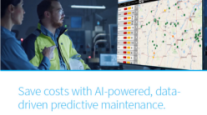Editorial: Keeping Up With the ‘Hands’ of Time
The notion of being a “hands-on” worker still carries weight in professional circles. Hiring managers are always looking for the kind of people who are ready to get their hands dirty and do the heavy lifting to get the job done.
Increasingly, though, some of the things that once were decidedly “hands-on” are becoming much more “hands-off” thanks to the march of technological innovation.
Take, for example, diagnosing repair problems on a truck. To be sure, electronic diagnostic systems have been around for years, but in the long history of trucking we’re not that far removed from the days when service professionals relied mostly on their eyes and ears to determine why a unit wasn’t running quite right.
The next big leap may be just around the corner.
According to experts we interviewed for a story on predictive maintenance, trucking is catching up with the aerospace industry in the use of technologies that could help it expand more into condition- and prognosis-based maintenance — in a nutshell, predictive maintenance with granular data culled from sensors and informed by big data working together to get performance data to fleets before major issues arise. Original equipment manufacturers are already ahead of the curve, with onboard diagnostics systems that keep tabs on a truck’s systems and can transmit information on a needed repair to service providers before a truck arrives in the shop.
The predictive technologies discussed in this story that also starts on the front page of our April 15 issue are a next-step advancement that could take “hands-off” a step further, but one that could also help keep more trucks on the road.
Technologies that provide consumers with a way to make purchases that once required a visit to a store are also featured this week. The types of products that people once insisted on sampling with their own eyes and hands — everything from groceries to washing machines — are increasingly being ordered with the click of a mouse. Yes, hands are still required to make the purchase, but what’s lost is the chance to test the machine’s buttons, or find the shiniest apples.
But let’s face it: Consumers and businesses are becoming increasingly comfortable with having more things brought straight to their doors because it saves resources and time — both of which are often in short supply. And if there’s one set of hands we can’t change, it’s the hands of time. They keep moving forward. And those who keep up with the changes time inevitably brings will be the “hands-on” problem solvers of tomorrow.




